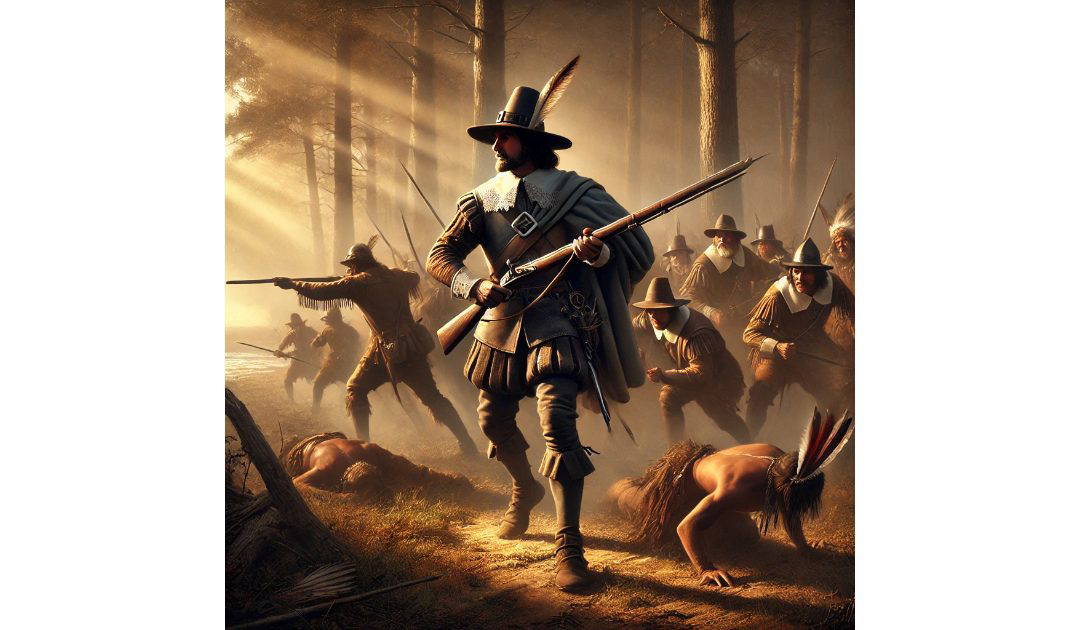I have posted recently about potatoes and Sir Walter Raleigh. Discoveries like potatoes and tobacco would probably not have been made without contact with native Americans. That’s where Myles Standish comes in. Myles Standish (c. 1584–1656) was an English military officer who played a key role in the early years of the Plymouth Colony. Known for his leadership and tactical skills, Standish was hired by the Pilgrims to serve as their military adviser and protector during their voyage aboard the Mayflower in 1620 and their settlement in the New World. His strong personality and assertive nature made him a prominent figure in the colony’s survival.
Standish’s first encounter with the Indigenous peoples of North America occurred shortly after the Pilgrims established Plymouth Colony. Known as the “First Encounter,” it took place on 16th December 1620, near present-day Eastham, Massachusetts. After anchoring the Mayflower at Cape Cod, the settlers launched exploratory missions to scout for a suitable location for their colony. During one of these expeditions, Standish led a group of men in search of resources such as fresh water, food, and arable land.
The group came across an area that appeared to have been previously cultivated, with stored corn buried underground—evidence of Native American presence. They took some of the corn to sustain the colony, intending to repay the Indigenous owners later. On 16th December 1620, while camped near a freshwater pond, the Pilgrims had their first direct encounter with Native Americans.
Early in the morning, a group of Nauset warriors launched a surprise attack on Standish’s party. The Pilgrims defended themselves using their muskets, and the skirmish ended without casualties on either side, as the Nauset retreated. This brief but tense encounter demonstrated the mutual mistrust between the settlers and the local Indigenous peoples. The site of the clash became known as “First Encounter Beach.”
Standish’s military experience and leadership during the First Encounter set the tone for his role in the colony. Although relations between the Pilgrims and Native Americans improved in the following months—partly through the intervention of Squanto and Massasoit—Standish’s approach to Indigenous relations was often marked by caution and, at times, aggression. His later campaigns against Indigenous groups solidified his reputation as a protector of the colony but also contributed to tensions with local tribes.
The First Encounter remains a defining moment in early colonial history, highlighting the challenges and complexities of cultural exchange and survival in a new land.

